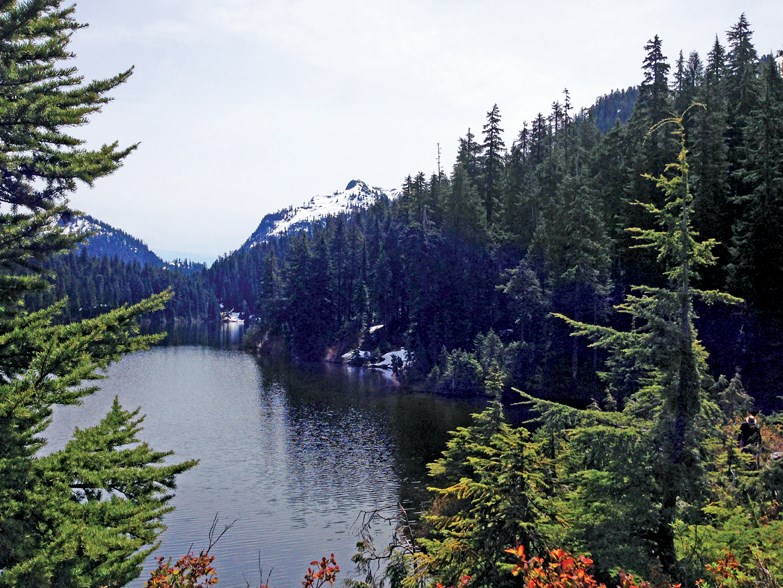Sunshine Coast Regional District (SCRD) officials say they have a “high degree of confidence” when it comes to provincial approval of the Chapman Lake expansion project. Work on new environmental impact studies will take place this summer, with the goal of starting construction on the $5-million project in 2017.
In the meantime, the SCRD is awaiting the outcome of an Alternative Approval Process (AAP) to authorize a 30-year loan to pay for the project. The AAP, which requires eligible voters who are against authorization to submit forms in writing, closes at 4:30 p.m. July 26.
The Sunshine Coast Conservation Association is waging a campaign to have the AAP defeated (the AAP is considered to have failed if 10 per cent of eligible voters, or 1,888, submit forms). The association has acknowledged a failed AAP doesn’t mean rejection of the project, but it believes a defeat would send a strong political message.
If the AAP does not go through, the SCRD has said it will borrow the money over a five-year term, which would increase the yearly parcel tax for repayment from about $23 to just over $100.
SCRD administration and directors who support the project have ramped up their effort to get more information to the public. A special section has been added to the SCRD website offering answers to frequently asked questions about the project and details about the AAP.
There was also a closed briefing for local media on July 14. The briefing did not include any new information, but SCRD chair Garry Nohr said they’ve been hearing from some residents that they don’t feel they’ve been getting all the details of the project or the reasoning behind going ahead with it.
Several directors, including Mark Lebbell of Roberts Creek and Ian Winn of West Howe Sound, pointed out that the project is part of a previously approved water strategy, and that Chapman Lake is recognized as a drinking water source in the Tetrahedron Provincial Park master plan.
“[The regional water plan] is a document that was created at the time of the previous board,” Winn said. “Maybe the public isn’t aware of all the things within that plan, and there are many things in it that address the water supply challenges we have on the Sunshine Coast.”
Those measures include searching for new water sources and, in the longer term, constructing a reservoir or “engineered lake” to store water. Preliminary work is already underway on those options.
Nohr said, from his perspective, people should not be concerned that increasing the ability to draw more water from Chapman Lake will be anything more than an interim step toward long-term solutions.
“That’s what I voted for,” said Nohr. “This is an emergency program. It’s one that we can handle for a while. I would be really querying staff if they asked us to draw down in a non-emergency situation.”
He also said the province’s insistence on new environmental impact studies is a chance to ensure the project is done right.
Darnelda Siegers, director for Sechelt, also sat at the board table when the water plan was adopted, but the Chapman Lake expansion was put on hold.
“I remember when [opponents of the expansion] came here and said do not do this. It was a minority of the Coast that came forward at that time. That’s who we heard from. The board took them seriously, and slowed things down,” she said. “Then we had the drought last year, and we heard from the majority of the Coast, and the majority of people came out to meetings in droves and told us, ‘Don’t stop. You’ve got this plan, start moving it forward.’”
Elphinstone Director Lorne Lewis does not support the project, and has consistently voted against it. Lewis was at the briefing, and said he is not actively involved in the campaign to reject the AAP. “But, anyone can phone me and ask questions,” he added.
Lewis said his opposition boils down to wanting to prevent industrial activity in a watershed and a provincial park. He also said he did not feel it was fair to exclude the public from observing the briefing.
Earlier in the day, the SCRD board endorsed recommendations for installing and using a siphon system to draw more water from Chapman Lake to “maintain water capacity at Stage 3 levels” during a drought.
At the committee stage, Lebbell tried to get the wording amended to “maintain water capacity at Stage 4 levels,” and raised the issue again during the board vote. “It signals to me that we won’t be going to Stage 4 again in all likelihood, which is a significant policy change,” he said. “That approach is not consistent with the intensive demand management approach, in my view. And certainly not with a conservation-based approach.”
Lewis also opposed the recommendation.
SCRD staff estimate that, if needed, the siphon would cost about $123,000 to install and $15,000 per week to operate (the materials have been purchased, at a cost of around $154,000).



